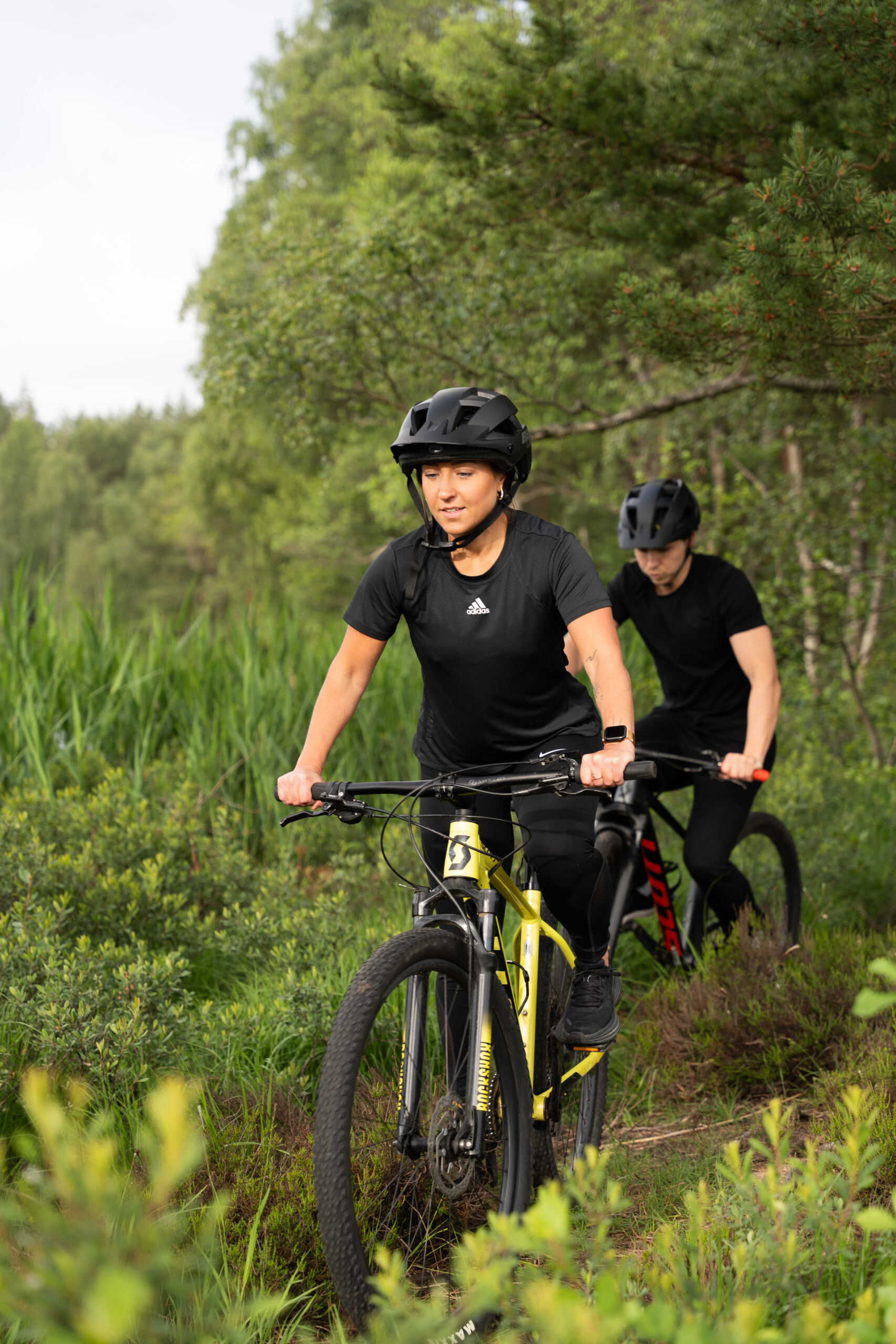Here, we’ve gathered some useful tips and advice that can be helpful to you.
1) You don’t have to ride on the narrowest trail with the biggest roots right away. It’s more fun to feel like you’re mastering the bike and not failing immediately.
2) Do balance training on your bike as a warm-up. Get to know the brakes and gears. Experiment with shifting your weight. What happens?
3) Start on the asphalt or gravel road! Try an uphill section and shift to the right gear before the incline. Beginners on mountain bikes need to become friends with the bike. The forest goes up and down, it turns and moves. And it’s not asphalt! Learn timing with brakes and gears and find your flow on easy trails. Go!
4) Gradually increase the difficulty. Ride slow and fast, try different paths, learn to make decisions, and understand how your tires behave with your weight shift. On an uphill, you need to put weight on the front wheel; on a downhill, you need to push your hips back to balance. You will clear obstacles more easily with sudden shifts and pressure from the ground, but this is something you’ll learn later.
5) Dare to ride with speed! With speed, you’ll get over roots and obstacles much easier. It’s when you hesitate that you get it wrong. Go for it with a “now let’s do this” attitude in short sections at a time, and ride with focus.
6) Don’t make it unnecessarily hard. Wet roots are more challenging than dry ones. When you’re a beginner, avoid riding in the rain during your first few rides.
7) Ride with a group or a friend. Ask for advice and tips. It’s okay to be a beginner!



